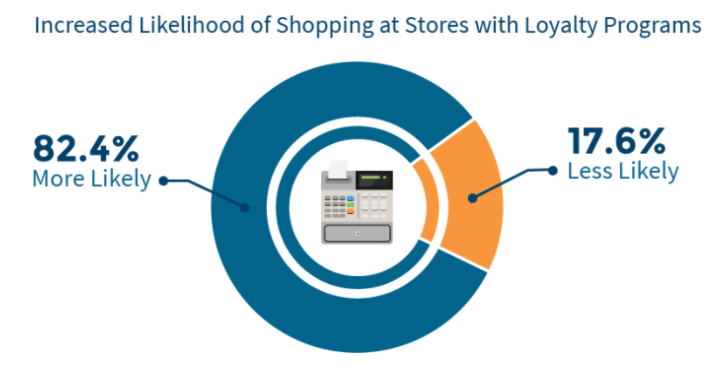If your sales are starting to plateau or decline, you’ve got to come up with a new strategy to get a cash injection into the business. Some of these point systems could have a cash value or be used to make purchases. Here’s an example of how a credit card issuer uses a point system to encourage customers to spend more money on their cards: Points can be used to purchase electronics or other products through their platform. If they see something they want, they’ll spend more money to get more points. The Sephora Beauty Insider program is one of the best examples of this type of loyalty system: It’s a simple concept. If you want your top spending customers to get more rewards, you should consider this type of program for your business. Work with another brand to get more exposure for your loyalty program Once you come up with a loyalty program, you’ll need to find ways to promote it. You’ll get free promotion every time the partner company pitches the rewards system. Create a loyalty program that focuses on your company mission You can also come up with a loyalty program that speaks to customers who have the same vision and mission as your company. What type of strategy does your company use to retain customers with a loyalty program?
If your sales are starting to plateau or decline, you’ve got to come up with a new strategy to get a cash injection into the business.
Even if your company is doing OK right now, you have to ask yourself whether your current business model is sustainable in the future. It’s always important to analyze the trends and plan ahead.
Are you utilizing a customer loyalty program?
If you have a loyalty program in place, that’s great. You’ve at least identified it’s necessary. But now, it’s time to make sure it’s actually making you money.
If you don’t have a loyalty program set up, that’s OK for right now. However, I’m going to explain to you why that needs to change soon.
Even if you don’t have a customer rewards or loyalty system in place, I’m sure you know how these work. You might even be a loyalty program participant at someone else’s business.
Basically, these programs collect consumer information, and each customer gets some kind of card, ID, or login information to track their spending habits. Members get rewards, based on how the program is set up, which encourages them to keep coming back.

Punch cards or stamp cards are both super basic versions of a customer loyalty program.
The local food truck outside your office might give you one of those cards and reward you with a free sandwich on your tenth visit, for example.
As long as you can get customers to keep coming back and spending more money, the program will be successful. I’ll show you different ways to implement this strategy.
Why customer loyalty matters
Loyalty is important because it’s easier and less expensive to market to your current customers as opposed to acquiring new ones.
You’ve got a 60-70% chance of selling something to your existing customers. But you’ve got only a 5-20% chance of getting a sale from a prospective customer.
Plus, acquiring a new customer can be up to seven times more expensive than retaining an existing customer.

Furthermore, a returning customer will spend 67% more money than a new customer.
All of these statistics prove why loyalty is so important, but now it’s up to you to make it happen. If you don’t act fast, one of your competitors could come up with a loyalty program that steals your customers.
Here are some of the best ways to implement a customer loyalty program.
Create a basic point system
Let’s start with something simple. Point systems are a very common way to encourage customer loyalty.
For example, every dollar spent earns the customer one point. Those points can be used to get discounts and promotions. Some of these point systems could have a cash value or be used to make purchases.
You could even give the customer ten points for every dollar spent. It makes them feel as if they are earning more.
Here’s an example of how a credit card issuer uses a point system to encourage customers to spend more money on their cards:

Points can be used to purchase electronics or other products through their platform. Customers can track their points by logging into their customer profiles.
If they see something they want, they’ll spend more money to get more points. Eventually, they’ll redeem their points for the reward they want.
It’s a very simple but effective concept. You can easily implement this type of program into your business model.
Charge an annual fee
Charging the customers upfront to participate in the loyalty program is another strategy that has lots of benefits.
For starters, you’re collecting additional money right away whenever someone joins the program. That extra bit of cash can boost your bottom line.
But you’re also still getting the added benefits of customers coming back and spending more money.
If a local pizza shop gives you a punch card and you’re not happy with the pizza, you can just throw the card away and never go back. But that’s not the case if you pay for a loyalty membership.
Amazon Prime is a perfect example of this program in action. They charge customers $99 per year to become a member.

One of the top benefits of being an Amazon Prime member is you can get free two-day shipping on your purchases.
Prime customers will always visit Amazon first if they want to buy something before checking out other websites. Why would they pay for shipping or wait a week to get their package when they can get it in 48 hours at no extra cost?
They already paid for the membership, so they might as well use it.
There are other added benefits…

COMMENTS